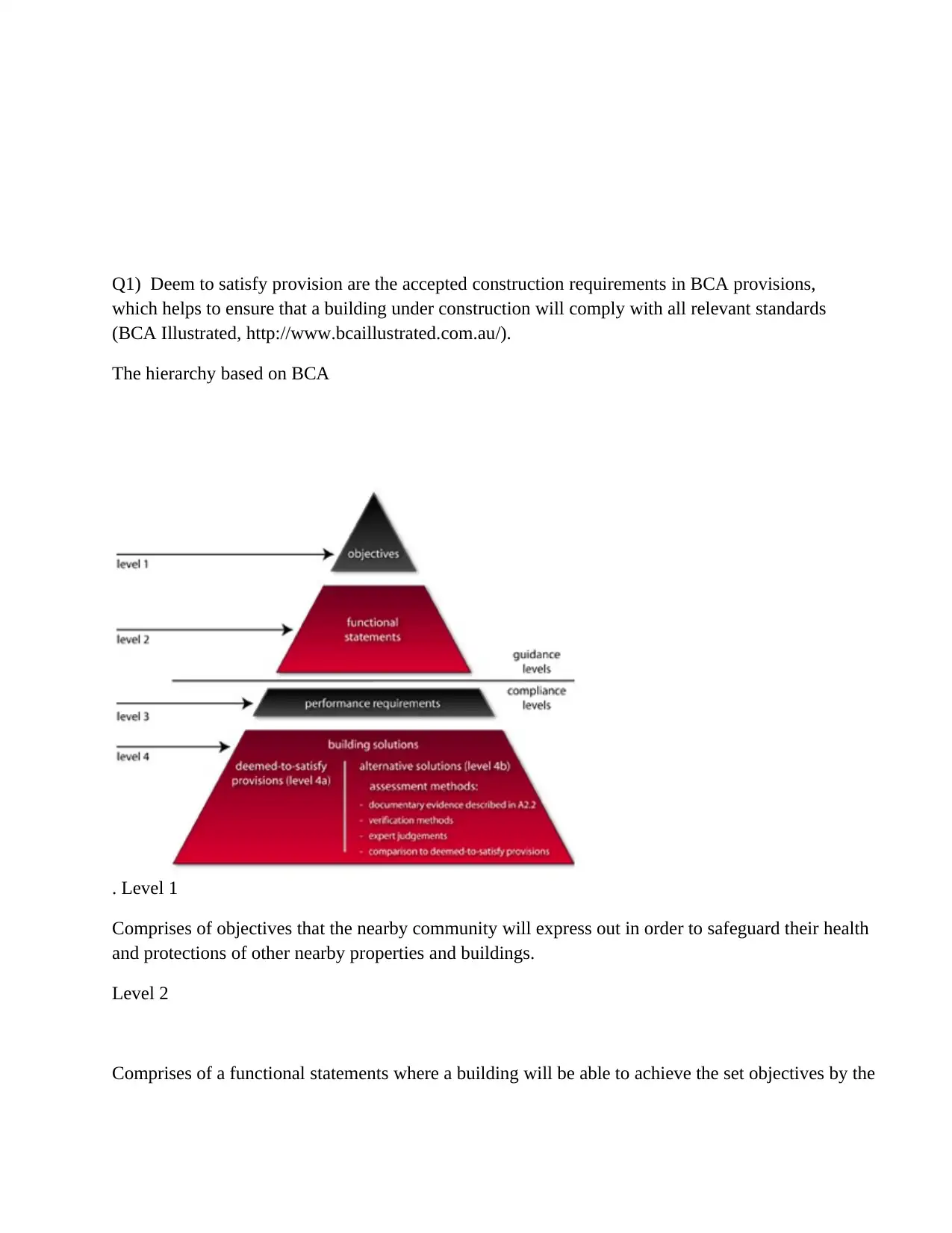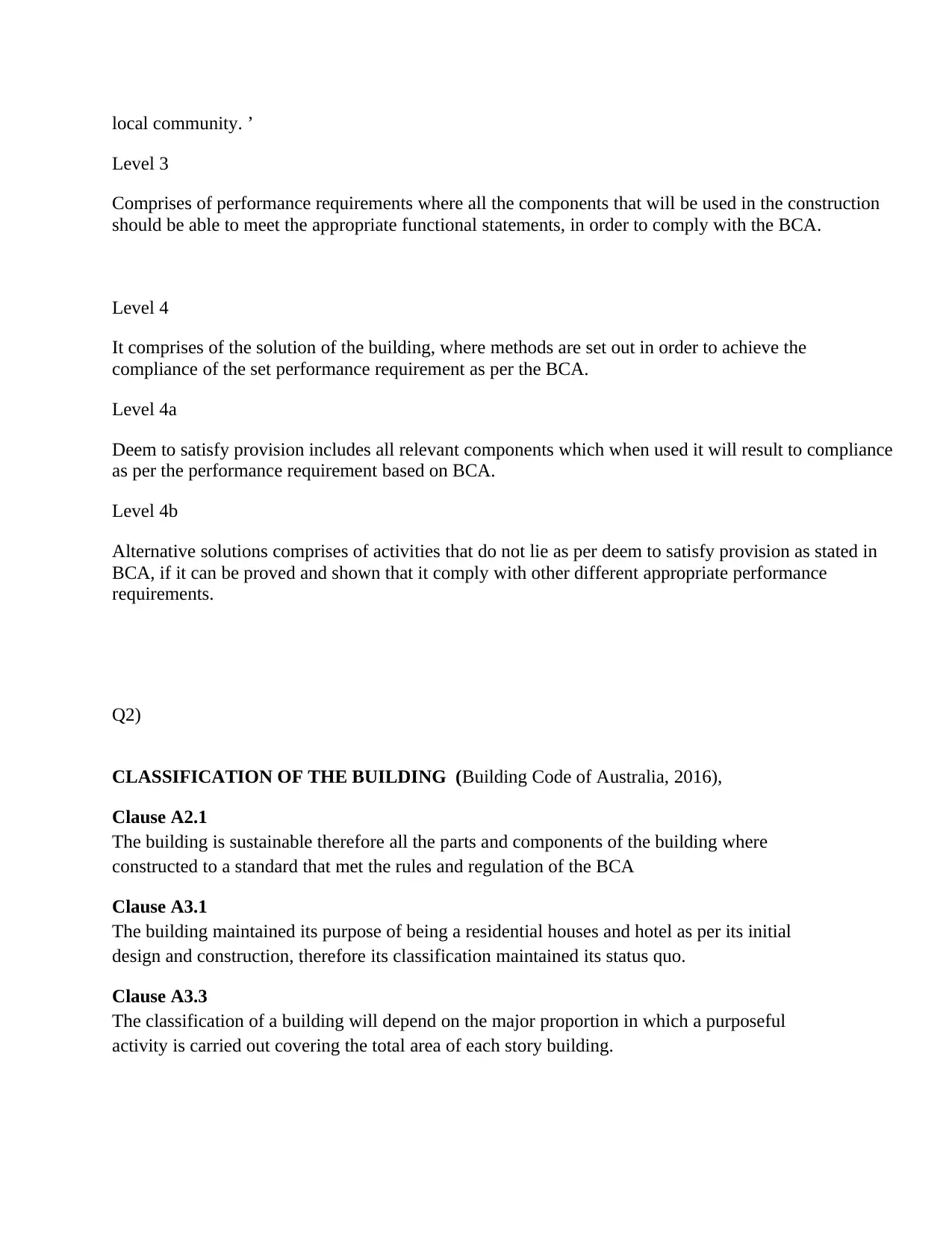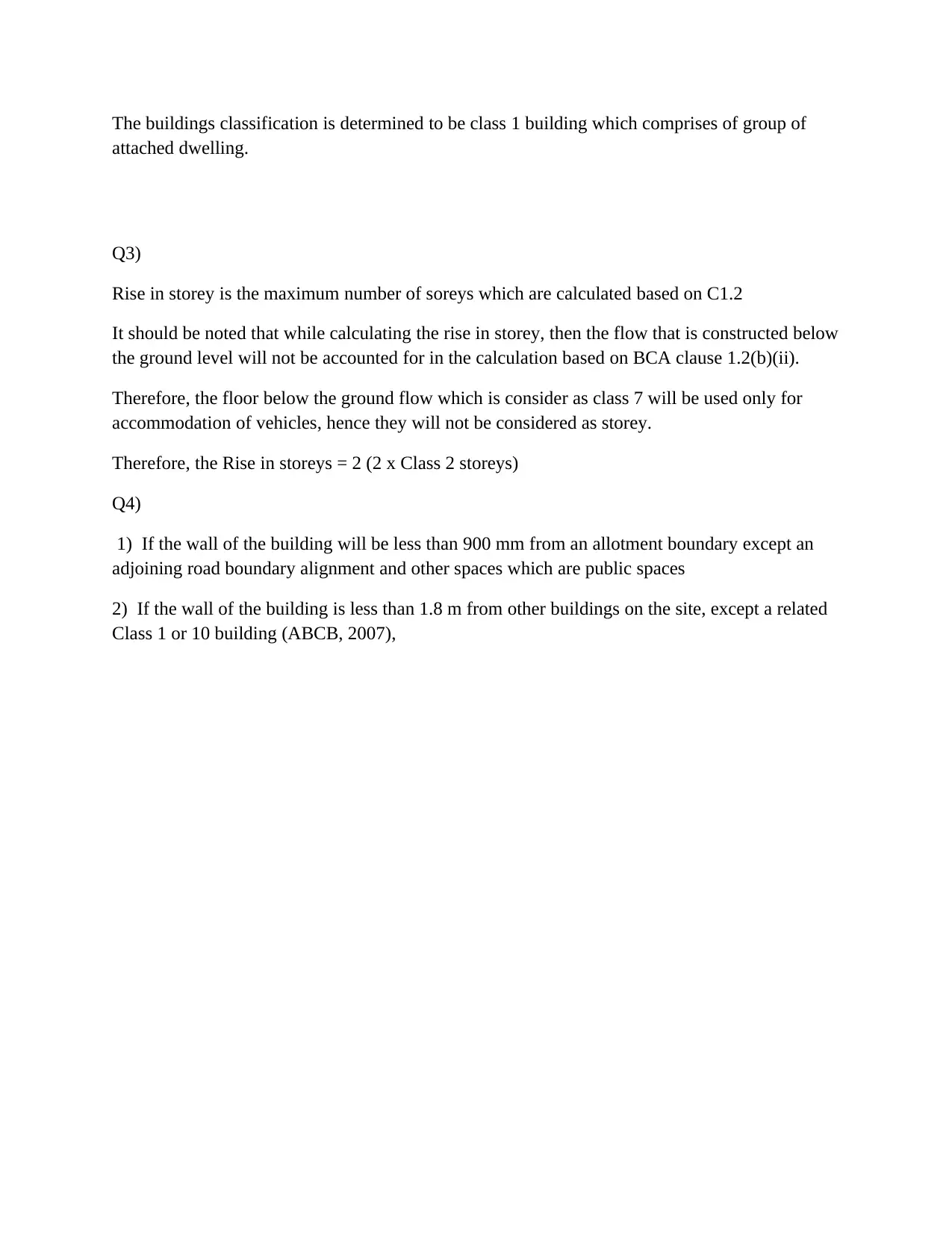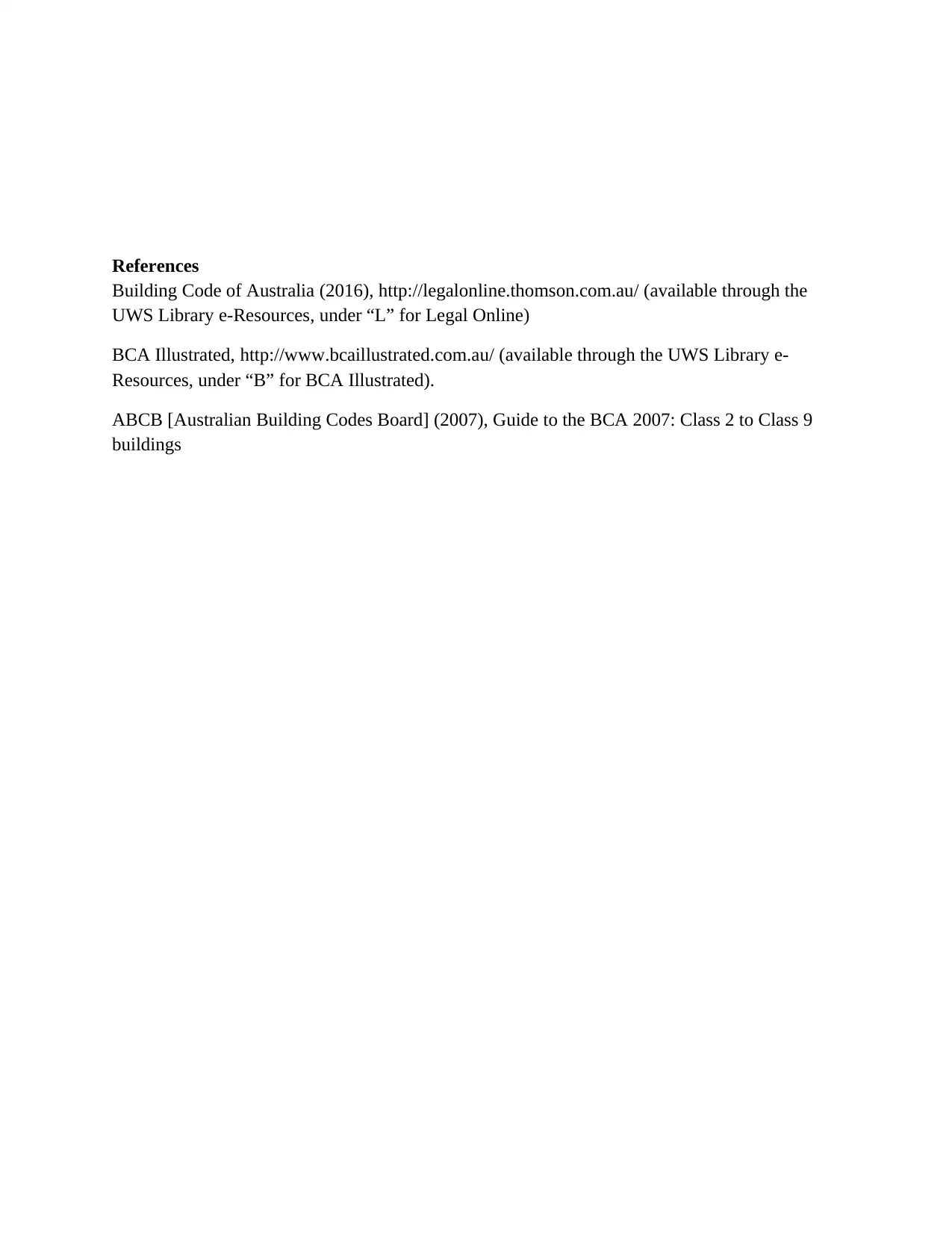Building Regulation Studies: Understanding Fire Regulations & BCA
VerifiedAdded on 2023/06/07
|4
|598
|441
Homework Assignment
AI Summary
This assignment delves into fire regulations and compliance with the Building Code of Australia (BCA). It discusses the 'deem to satisfy' provisions and the hierarchy of requirements within the BCA, explaining how these provisions ensure building standards are met. The assignment also classifies a building according to the BCA, focusing on aspects like fire resistance and wall construction. Furthermore, it determines the 'rise in storeys' for a residential complex, considering the BCA's guidelines on calculating storey numbers. Finally, the assignment addresses the fire-resisting requirements for external walls, particularly in relation to their proximity to boundaries and other buildings.
1 out of 4











![[object Object]](/_next/static/media/star-bottom.7253800d.svg)